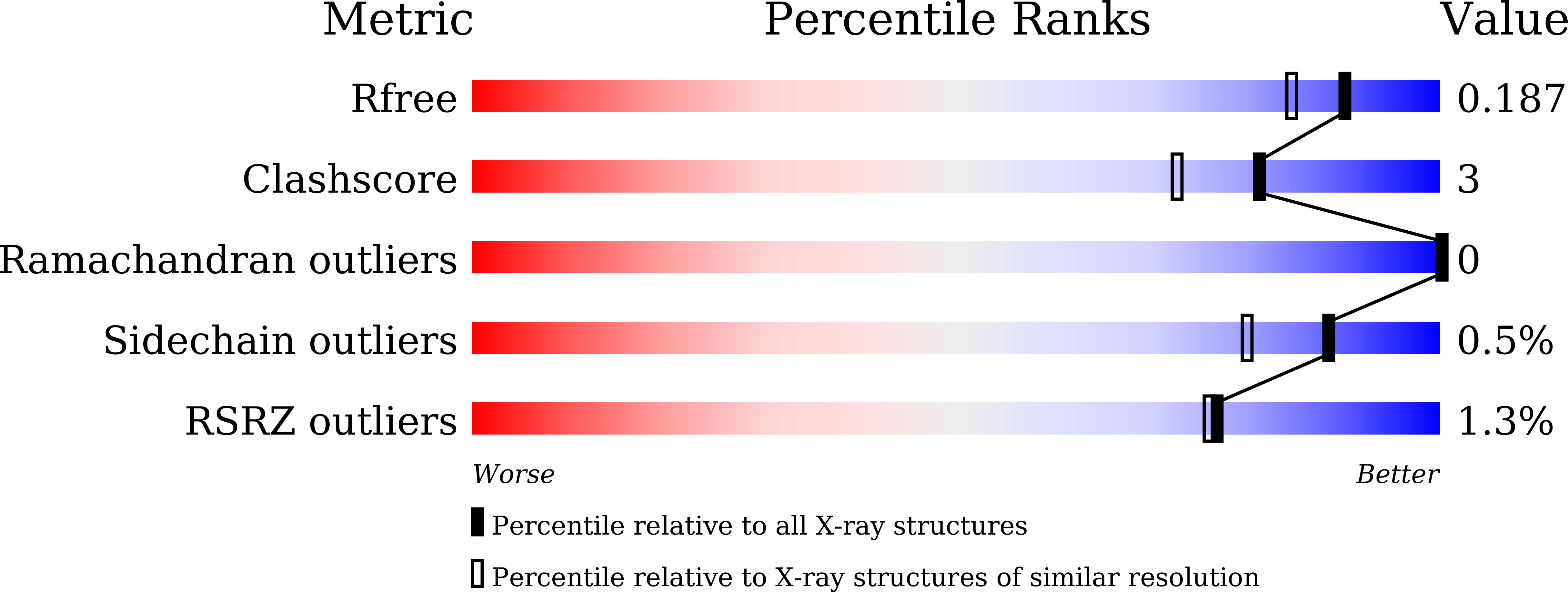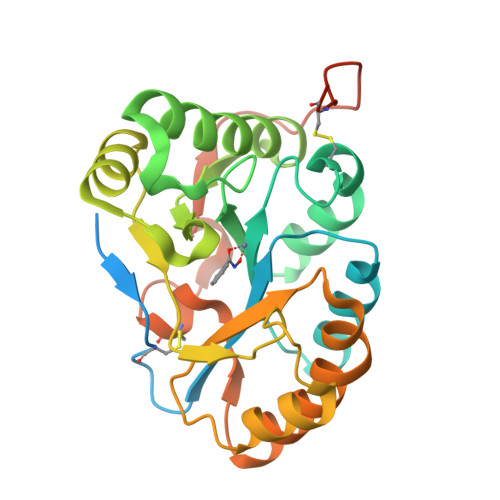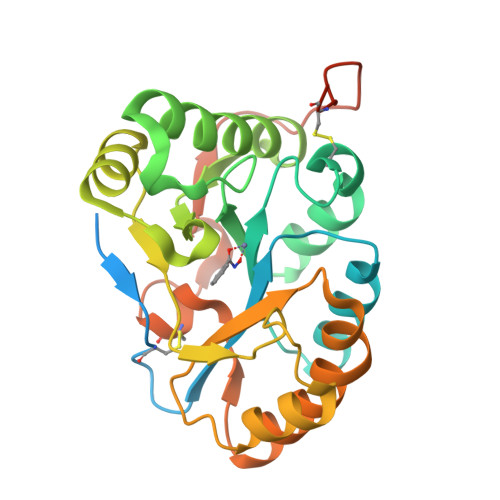Inhibition of chitin deacetylases to attenuate plant fungal diseases.
Liu, L., Xia, Y., Li, Y., Zhou, Y., Su, X., Yan, X., Wang, Y., Liu, W., Cheng, H., Wang, Y., Yang, Q.(2023) Nat Commun 14: 3857-3857
- PubMed: 37385996
- DOI: https://doi.org/10.1038/s41467-023-39562-7
- Primary Citation of Related Structures:
8HE1, 8HE2, 8HE4, 8HF9, 8HFA - PubMed Abstract:
Phytopathogenic fungi secrete chitin deacetylase (CDA) to escape the host's immunological defense during infection. Here, we showed that the deacetylation activity of CDA toward chitin is essential for fungal virulence. Five crystal structures of two representative and phylogenetically distant phytopathogenic fungal CDAs, VdPDA1 from Verticillium dahliae and Pst_13661 from Puccinia striiformis f. sp. tritici, were obtained in ligand-free and inhibitor-bound forms. These structures suggested that both CDAs have an identical substrate-binding pocket and an Asp-His-His triad for coordinating a transition metal ion. Based on the structural identities, four compounds with a benzohydroxamic acid (BHA) moiety were obtained as phytopathogenic fungal CDA inhibitors. BHA exhibited high effectiveness in attenuating fungal diseases in wheat, soybean, and cotton. Our findings revealed that phytopathogenic fungal CDAs share common structural features, and provided BHA as a lead compound for the design of CDA inhibitors aimed at attenuating crop fungal diseases.
Organizational Affiliation:
School of Bioengineering, Dalian University of Technology, 116024, Dalian, China.


















